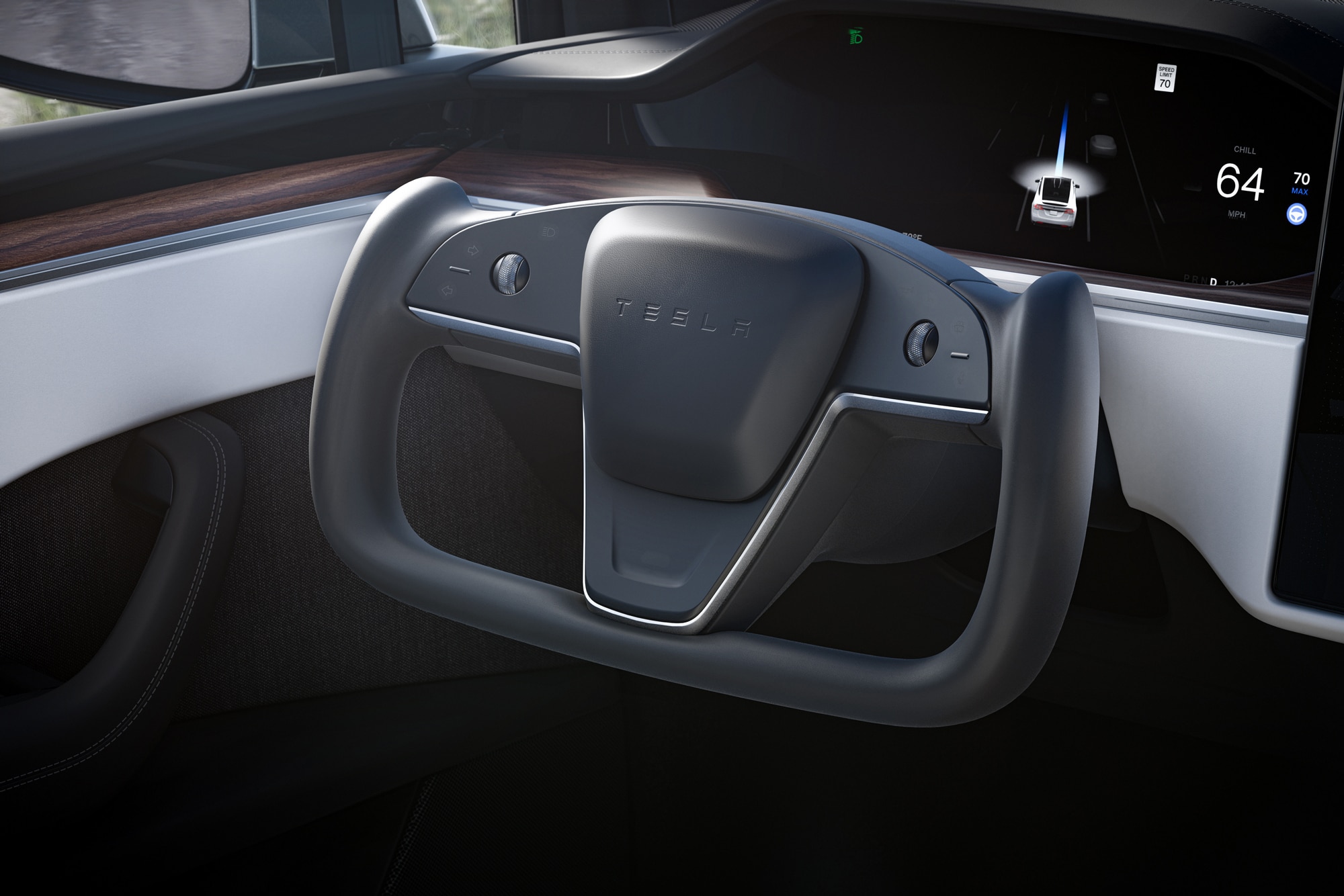How to Reset the Tire-Pressure Light in a Tesla
Take care of tire pressure problems quickly with these reset procedures.
 Tesla
Tesla
Article QuickTakes:
For the past 15 years tire-pressure monitoring systems (TPMS), have been a requirement on all new vehicles sold in the United States. The feature uses wheel-mounted sensors to keep tabs on the air pressure inside each tire. If that pressure drops below a safe level, or if the signal is lost, it activates a warning light on the dashboard.
There are a number of reasons as to why you might see a tire-pressure warning light appear on your Tesla's dashboard. Here's a look at what to do when this light pops up.
Determine Why the Tire-Pressure Light Is On
Before resetting the tire pressure light in a Tesla, you’ll need to figure out what is causing the light to be displayed.
- If you have a flat tire, you’ll need to replace it or have it repaired, then filled to factory pressure.
- If one of your tires is low on air, you will need to refill it prior to the reset.
- If a sensor is displaying no reading, you will have to replace that sensor prior to the reset. The TPMS light will flash at startup should the vehicle detect a sensor problem.
If you are installing a new set of wheels and tires, or a new set of tire pressure monitoring sensors, then you will also have to perform a reset of the TPMS.
Reset Tesla Tire-Pressure Light by Driving
After performing any of the above, your Tesla's tire-pressure light will automatically reset after driving for about 10 minutes at speeds at or above 15 mph. Keep in mind that this automatic reset will only occur if all tire pressures are reading as normal by the monitoring system.
Reset Tesla Tire-Pressure Light Using the Touchscreen
Tesla has labeled this feature as only to be used when switching from one set of wheels to another. This often happens in colder climates where owners downsize their wheels in order to fit winter-specific rubber, or when installing a new set of wheels.
As with most vehicle functions in a Tesla, resetting the tire-pressure light after a wheel change is accomplished by way of the touchscreen infotainment system that dominates the dashboard:
- Under the "Services & Reset" menu, you will find a section devoted to the "Tire Pressure Monitor", which offers a reset function.
- Select the proper wheel size and tap the reset button. This activates the vehicle's "Auto Learning" system.
- Leave the vehicle stationary for 20 minutes.
- Drive the Tesla at speeds of greater than 25 mph. Depending on model year, it can take up to 20 minutes of driving before tire pressures will appear on the "Car Status" screen.



